Menu
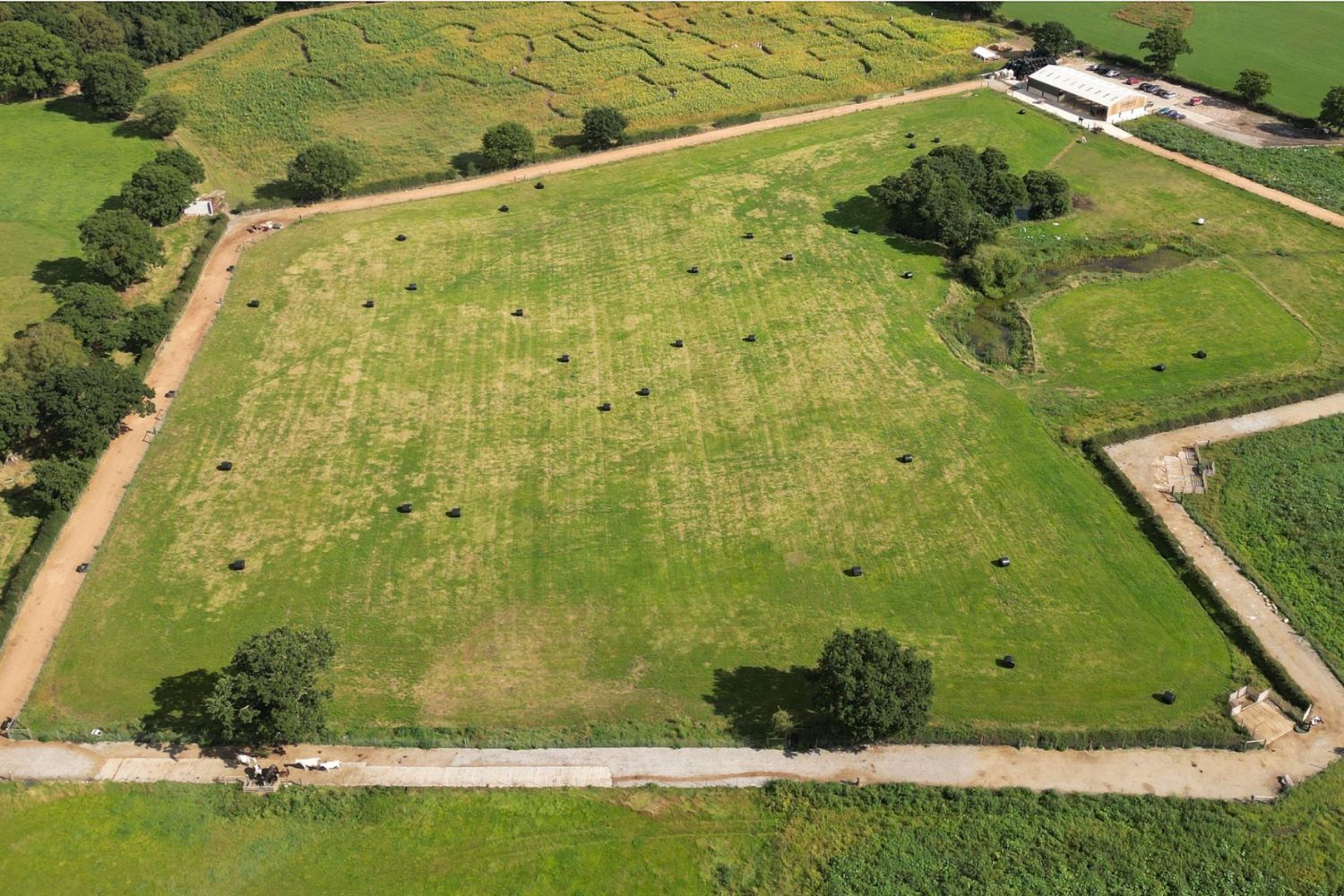
Something that is receiving more and more attention is the welfare of our horses and how we keep them. Therefore, we have interviewed one of the most popular and innovative track livery owners, Bethan Thornicroft.
She will explain how she manages a track livery yard, what she finds important, and what the benefits of having horses live on tracks can be.
For horses to move up to 15 kilometers per day and have an array of herb gardens available as well as a water buffet, Bethan Thornicroft is definitely at the top, when it comes to horse keeping. Though the setup requires a fair amount of work, once you have it all established, it becomes very simple.
“As long as the right environment is created, you don't have to do that much with the horse. The system simply manages itself.”
Bethan Thornicroft 36 years old, was born in the city and comes from a non-horsy background. She started riding lessons at age seven and got her first pony at 11.
She is the owner and operator of Gawsworth Track Livery in Gawsworth U.K.
Beth and her now husband originally did traditional grass livery and it was when she saw a track livery in New Zealand that she started to look into these and set up their first track in 2017. Together they bought a new farm and purpose-built the track system and everything that comes with it.
Yes, and no. As the saying goes; a dear child has many names, but what connects these three systems is, that it includes that the horse lives outside 24/7 in a herd with constant access to roughage and shelter. The overall concept for all three systems is, that the horse lives as close as possible to their natural state. The goal for these types of horsekeeping is, that the horse lives in a herd and moves a lot throughout the day, which benefits the horse's physical and mental body as well as us as riders since riders likely will experience a calmer and more confident horse. What differentiates active stables from the other two, is that is often include automated feed systems. Track systems will always include a track and offer less grass, which is optional for the other two systems. This article will use the term track livery, which will act as an umbrella term for all types of outdoor, herd living.
Bethan Thornicroft
It is one of Britain’s most successful track livery yards and it consists of a 1000-meter track, that is 6-7 meters wide, a huge barn and 25 horses. The place is purposely built, and Beth is looking to extend the track even further.
Originally Gawsworth Track Livery was intended for rehabilitating laminitic horses and horses with other lameness issues. But Beth is seeing a huge change in the equine sector, and all types of people and horses are coming to join the track world.
By nature, horses were not evolved to forage large amounts of the type of grass that we often keep them on today. Besides that, most of the grass grown in the UK, and most other northern European countries, is originally sown for dairy cows or feeding up animals for consumption. Therefore, most pastures consist of ryegrass and clover, designed to grow all year round and provide maximum input to animals that are growing. This results in the grass being very rich and sugary and not ideal for consumption in large amounts for most horses.
Bethan Thornicroft
At Gawsworth Track Livery 98 percent of the horses do not eat grass. Beth strongly believes, and experience, that most horses function better without grass in their diet. Instead, the main feed is mixed meadow hay with no ryegrass in. The hay is fed in slow-feeding hay nets, with small holes. This should replicate how horses naturally nipple and forage for food to encourage them to move. “Hay stations are dotted all around the track, but we make sure that there is no hay close to the water source, which is inside the barn. They will then have to walk back and forth from the hay to the water.”
The remaining two percent of the horses are the exemption that can manage small amounts of grass. Beth lets those horses in a grassy area overnight from 9 pm, as the grass will contain less sugar when the sun is not out. Further, horses eat less overnight because they also rest. These horses are typically some older horses, that will not get laminitis from the grass, very young horses, ex-racehorses, and skinny or neglected horses.
Note, that if horses are not on grass, supplementing vitamin E either through fodder trees and herbs as Beth does, or through supplementation, is necessary for the horse’s health.
It is a big debate whether hay nets can damage teeth, enamel, gums, and the general posture of the horse. It is proven, that if a horse eats for a prolonged period from a high hanging hay net (above wither height) it may damage posture through the jaw, poll, neck, and back as these parts will be pushed together in a banana shape.
Beth explains her experiences with over a hundred horses.
“We have never seen any problems and we have horses from all ages, sizes, and breeds and we use the nets here with no damage to teeth or gums or anything.”
Essential for using hay nets is the placement of the hay net and variation of the placement. They should only on rare occasions, replicate horses foraging from branches hanging high. Otherwise, they should be placed below the horse’s chest. This way it will not disrupt the horse’s posture.
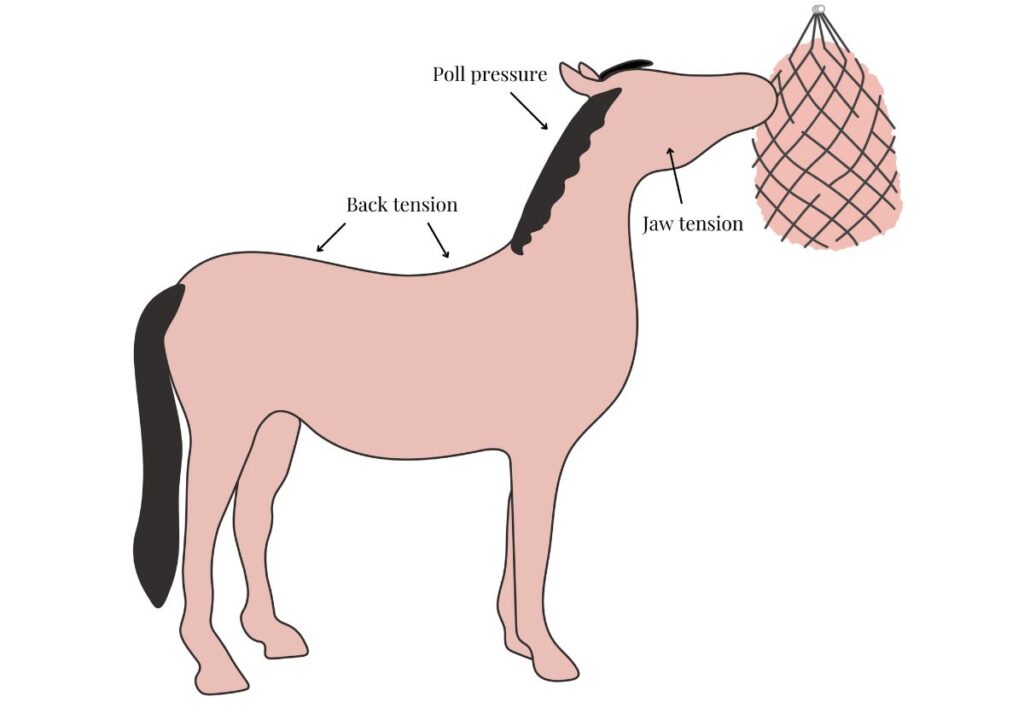
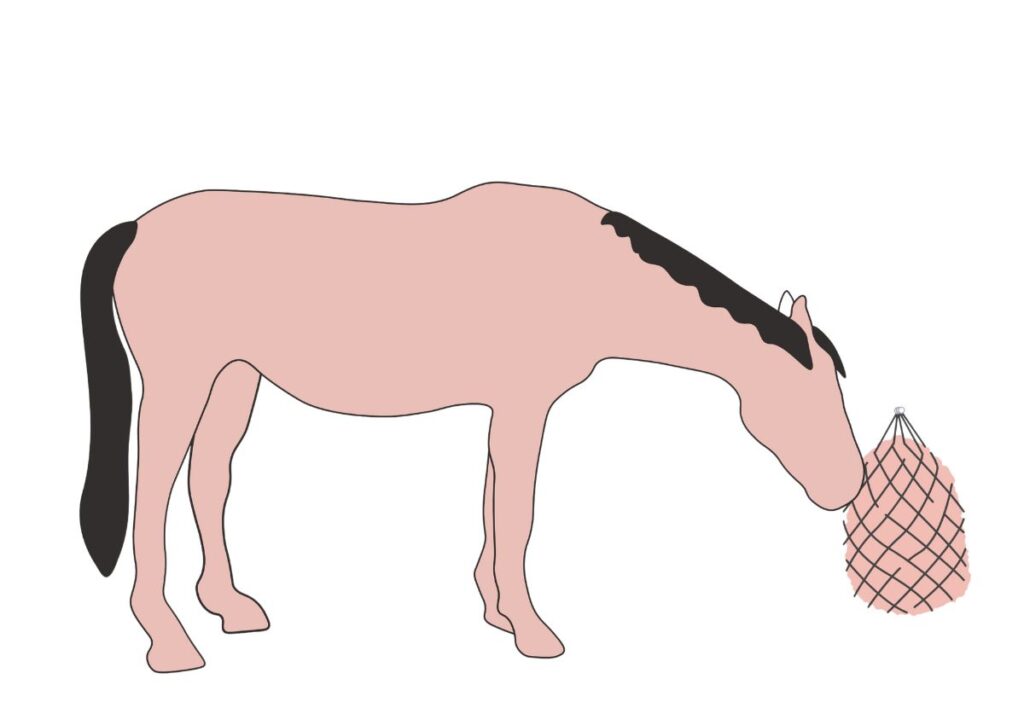
At Gawsworth hay nets are placed in various spots. “We hang hay nets onto the bottom of boxes in the barn, we tie some to tree logs, some are tied to the fenceposts. We try to alter it because horses aren’t just grazers, they are browsers as well. That’s why we like to alternate and change things up, so they are not constantly stood in one place or one posture, because that’s when you can start seeing issues in the poll, neck, and the back.”
Evidence has shown that double-layered hay nets encourage the horse to pull with harder force, potentially harming teeth and enamel. Single-layered, high-quality hay nets are essential for the horse’s health. Furthermore, if the horse is provided with enough roughage so it will not go hungry, it will pull less eagerly on the hay nets, reducing the chance of damage immensely.
Beth adds: “Our dentist always comments how the teeth of the horses here are always worn very evenly, which means the horses are very relaxed, as they will chew evenly on each side.”
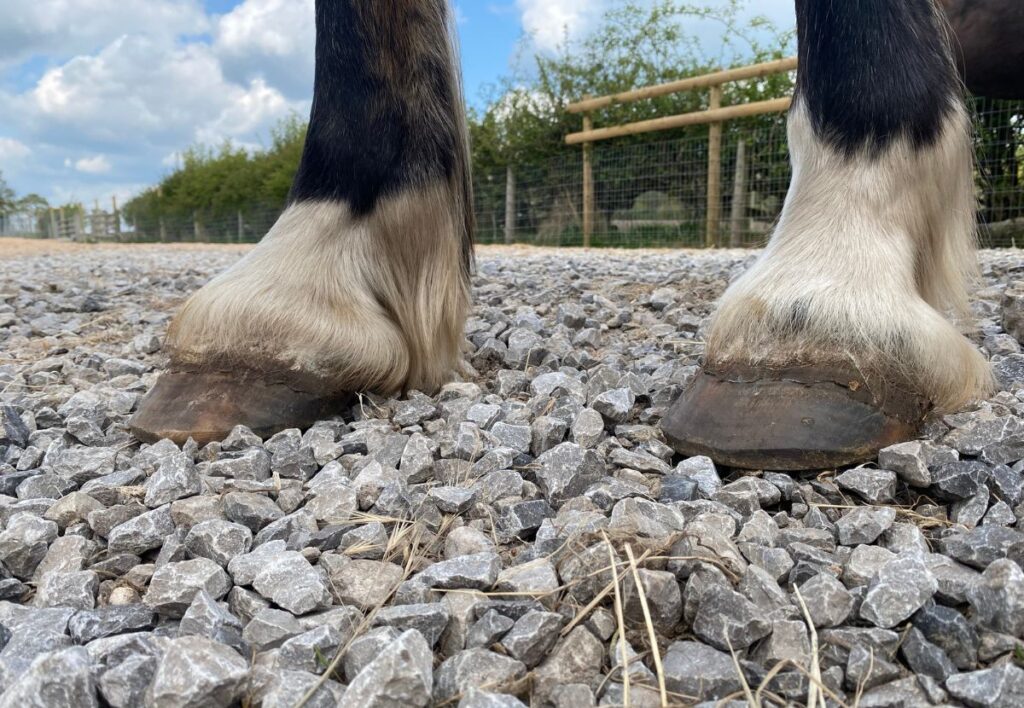
The amount of feed, supplementation, turnout time, and whether horses need rugs, are some disputed themes in the equestrian world. It has always been difficult to agree on the best solution, but every horse is different, and every owner has different belief systems. Beth’s experience is, that we need to simplify things:
Bethan Thornicroft
Beth believes, that getting as close to nature as possible is the best viable way for the horses. "This [track livery] is the next best thing. Huge acreage, woodlands etcetera, is the ideal, but we can't change the land." Yet it has been possible for Beth to imitate the natural habitat of horses, providing them with plenty of stimuli. Here is a list of some of the things Beth decided to implement at her track livery yard.
Through the 100 horses Beth has had through her livery yard, two horses did not fit. She experienced they became too boisterous, had never been turned out with other horses, claimed all the mares, wouldn’t share, and therefore fought.
No matter the horse, a track system can be very beneficial. Originally track systems have been more common for pleasure or rehabilitative horses, but recently more and more performance horses are being kept at track liveries. But why is it so beneficial for competition horses as well?
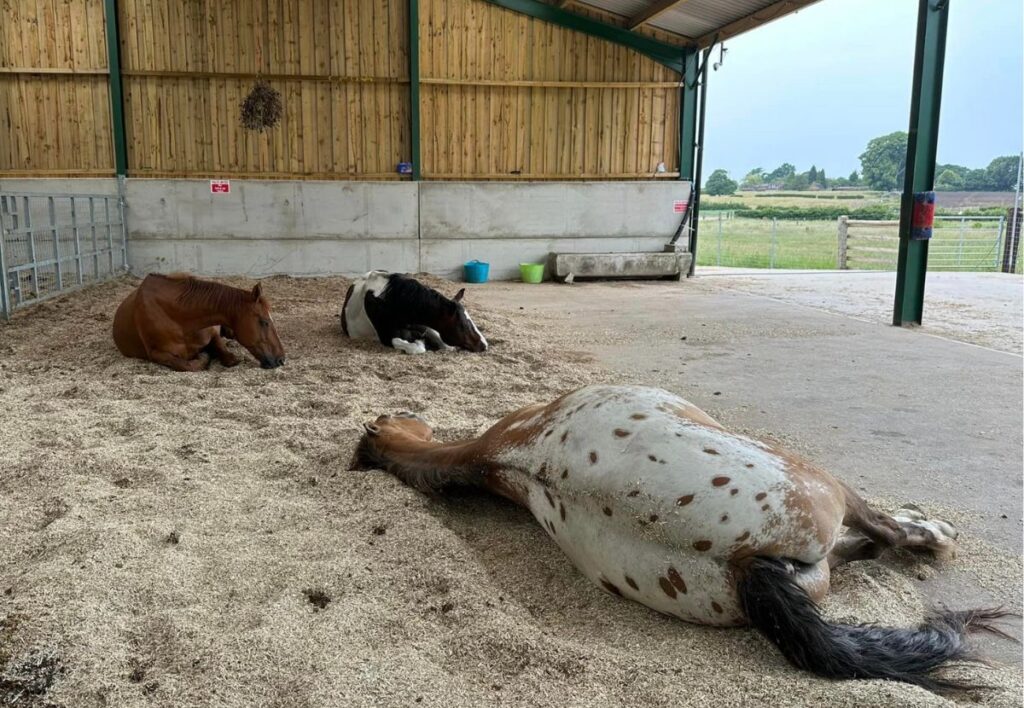
Holly Coetzee is a horse trainer and international showjumping rider from the UK, living in Dubai, and owns and trains horses at the track system Al Ruwayyah Stable. We asked Holly if she noticed a change when moving a horse from a traditional stable to a track system.
“I have noticed remarkable psychological changes in every horse that I have put out on a track system. The constant free movement and access to 24/7 forage encourages a healthy gut, better overall posture, in addition to healthier and stronger tendons, ligaments, muscles and joints. Most notably, they have all become more relaxed and straightforward to handle both on the ground and to ride within days of going out onto the track.”
This is something she also notices at competitions where the benefits are multifold:
“The biggest benefits have to be that our horses are in a much better place mentally at competitions. If horses are relaxed and feel safe and secure prior to events, I find that they can cope much better with the stressors involved in traveling, warming up, and then performing in a stressful atmosphere. Secondly, as a result of the improved psychological function of the horses out at competitions, improved physical performance is also noted. Thirdly, possibly due to the improved hoof function and stronger joints and muscles I also notice that horses are generally more forward and can ride faster rounds without putting their ears back at the rider’s increased leg pressure.”
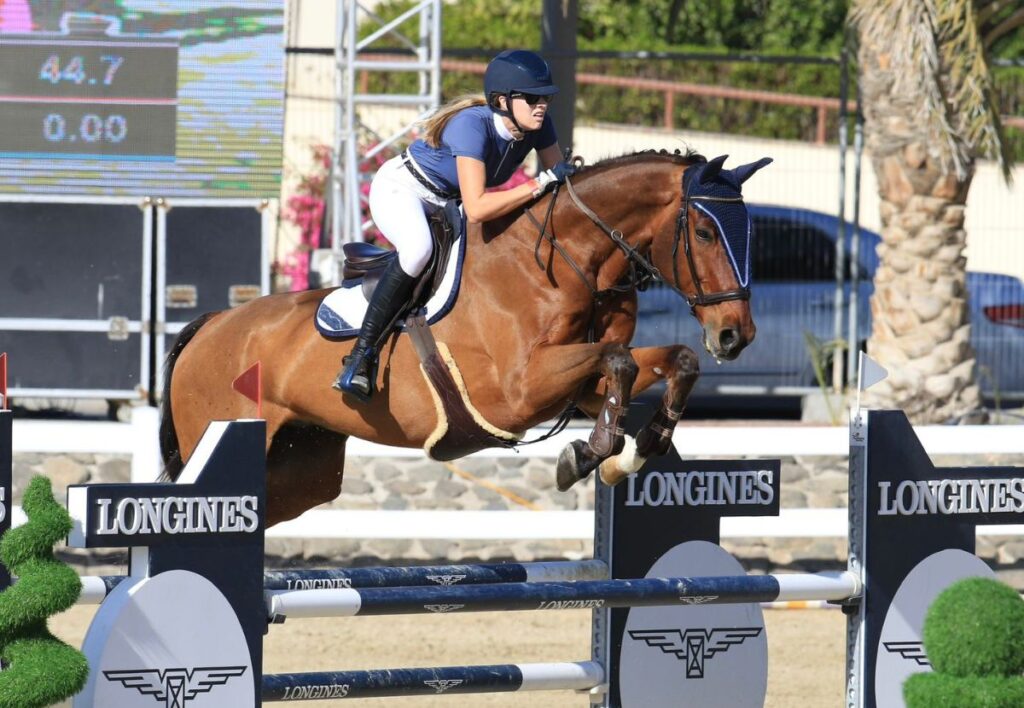
Holly’s horse was quite troublesome before moving him to a track livery.
“For my horse Connor specifically, he was always very difficult to catch when he was turned out in a conventional square paddock or field. He would jump or smash through paddock fencing to reach the horses in the next paddock, even if he was with another horse already. He would fence walk up and down the fence line for hours. Since arriving at Al Ruwayyah Track livery nine years ago, each of these vices have completely disappeared. All of his negative behaviors were directly linked to feelings of anxiety caused by being isolated from a herd living environment and lack of enrichment.”
We asked Holly what challenges she might experience when having horses on track systems and she replied:
Holly Coetzee
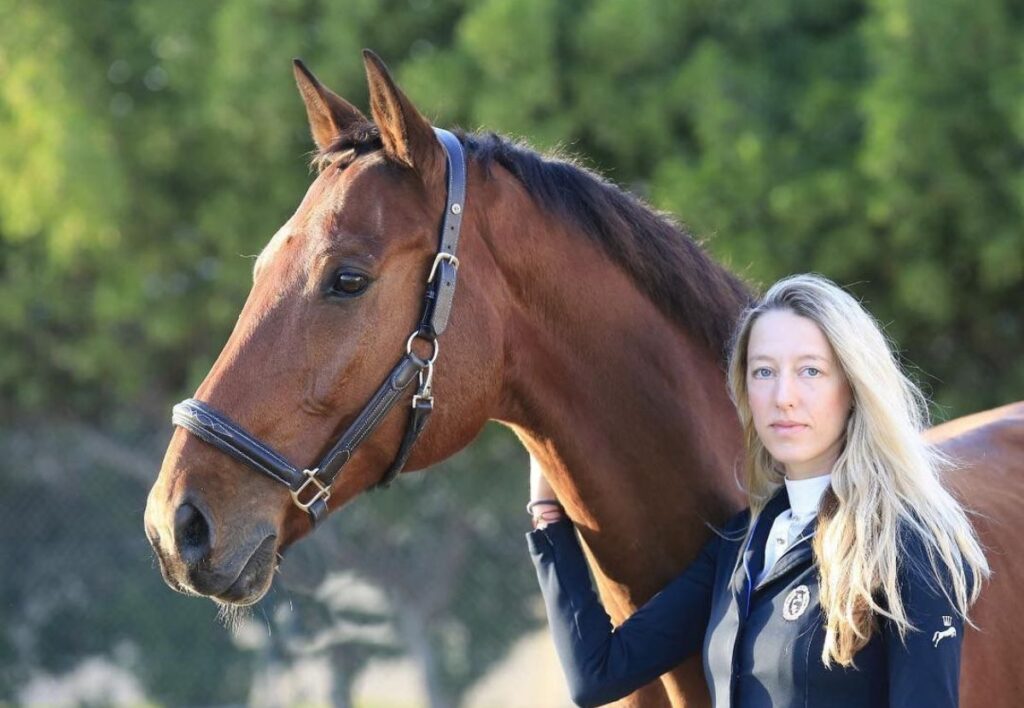
“Many owners fear that their horse will be injured by other horses. When horses first enter into a new herd there will undoubtedly be a few superficial cuts and scrapes received by the new horse. It is important to remember that the physical and psychological benefits of the horses being granted the freedom to interact and socialize with other horses at their leisure far outweigh these superficial injuries.”
In the long run, the movement and freedom achieved from a track system might have greater advantages for the horse and horse owner.
“In many cases, I have noted that the prevalence of more serious long-term injuries such as tendon and ligament damage, or development of arthritis is much higher when horses are kept mostly stabled and exercised only under strict control of their rider, often involving long periods of riding in circles and through the same movement patterns.”
Many owners are challenged by the fact that the horse may change looks.
“Many owners struggle with seeing their horses look more ‘rough and ready’ than they used to when they were kept mostly stabled. Those horses can go through quite an ugly phase when they go onto a track system, it’s almost as if their bodies don’t quite know how to react to the changing weather.”
When we asked Holly whether she would consider returning to traditional horse keeping there was no doubt.
“Never. The convenience of having horses stabled or turned out separately will never outweigh the physical and psychological benefits of my horses living on a track system.”
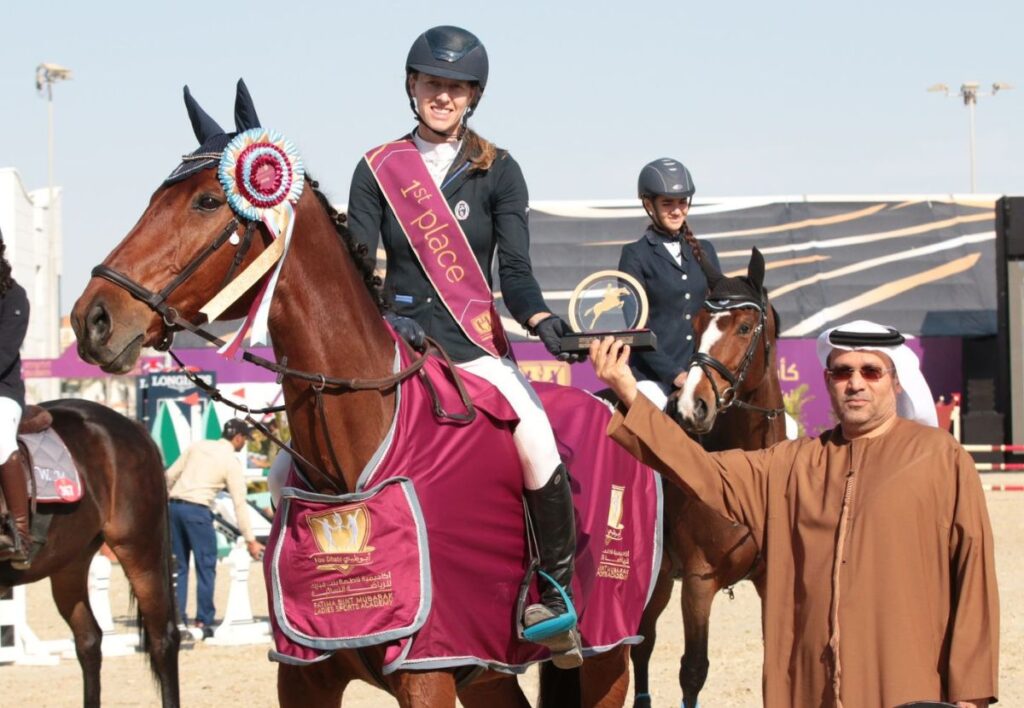
Examples of other riders who keep their performance horses outside between competitions are Carl Hester, Charlotte Dujardin, and Peder Fredricson. So even Olympic champions can live a natural life outside, with benefits.
That underlines, that most horses, no matter their job or their breed can be suited for track livery. But it is important to keep in mind that track systems, paddock paradise, active stables, and herd living in general are suited to most horses, but not everyone. Reasons a horse may not be suited to track livery can be due to many things such as previous history, medical history, feet, health, behavior, and so on.